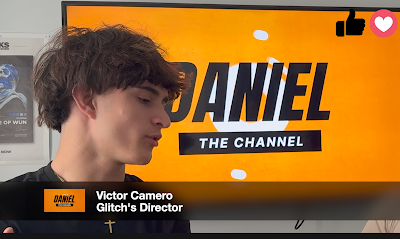As part of my AICE Media Studies Film Opening assignment, I must complete a Creative Critical Reflection (CCR) to analyze my work and filmmaking decisions. This reflection explores how my project follows or challenges industry conventions, engages with audiences, develops my production skills, and integrates technology.
The CCR must be presented creatively with two videos, podcasts, or other visual components. In each one, I have to answer two questions. It is an individual reflection so that I will share my insights from the process.
Some requirements are:
- Research
- Do not do things like "talking heads" in front of the computer
- Writing the scripts for each part of the CCR
In this post, I answered the first question. Also, I wrote some ideas for my script with this.
How does my film use or challenge conventions, and how does it represent social groups or issues?
Glitch follows many traditional horror genre conventions, such as an isolated protagonist, eerie sound design, and a slow buildup of suspense. However, instead of a haunted house or a supernatural entity, the horror comes from technology, my Video game console ( My Xbox), and an unsettling warning that suggests something beyond the screen is watching.
My project also challenges the girl stereotype in horror by featuring a male protagonist, showing that fear and vulnerability are not limited by gender. Andie Korenge, Editor in Chief of Eagle Eyes News (2024), said, "Horror films enforce stereotypical representations of women"; thus, most horror films have the first victim, a girl. So, I changed it, and my distressed character is a boy.
At the same time, Glitch reflects teen digital dependency, turning the obsession with gaming and social media into something dangerous.
My film represents part of the routine of teenagers playing video games and using social media. According to Paw Research, about 40% of U.S. teens play video games daily, including 23% who do so several times a day. Another 22% say they play several times a week, while 21% play them about once a week or less. Teen boys are far more likely than girls to say they play video games daily (61% vs. 22%).
I'm thinking in the format that I would use, and a "YouTube" show hosted for my cousin Daniel Velazquez ( he has a band and he loves to communicate ) sounds excellent. I have to work on this idea, but at least I am clear about what I want to say about the 1st question...
This is only a reference script.












































